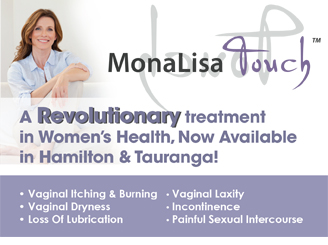Female Sexual dysfunction (FSD)
October 21, 2015, no responses, by: Women Health Center, Tags: causes female sexual dysfunction, female sexual arousal disorder, female sexual dysfunction symptoms, female sexual dysfunction treatment, female viagra, sexual disorders
I have had increasing questions regarding the newly FDA approved female “viagra” (Flibanserin-Addyi) so thought it was timely to approach this topic. Female Sexual dysfunction has generally been avoided in the past probably because we had nothing in our armoury to help manage the problem. Recent studies have suggested that the incidence in premenopausal women is in the region of about 10 – 12% but increases significantly postmenopausally.
The disease is further divided into hypoactive sexual desire disorder (HSDD) = distressing low sexual desire or female sexual arousal disorder (FSAD) = distressing low or absent genital arousal.
From a medical perspective treatment of HSDD and FSAD has been extremely difficult. It has been very challenging to quantify and whilst a woman may tell you what her symptoms are, it is a bit like depression in that there is no test for sexual dysfunction and it is tough to measure desire as compated to a male erectile response.
There is however a new drug that has been approved by the FDA for sexual dysfunction.
The problem of course with drugs like this in the past has been the the difficulty in deciding what measurements to use to determine outcomes. There has been a fair bit of controversy over this with almost 200 researchers, clinicians and sex therapists urging the FDA to withhold approval because of the company mounting a public campaign (Even the Score) accusing the FDA of sexism in that they had approved so many drugs for use in male sexual dysfunction but none for FSD. The even the score argument was based on the fact that in 2011 a testosterone ointment called Libigel was rejected. In 2004 Pfizer tried to get Viagra approved for FSD but was unsuccessful because they could not prove any effect on female arousal. The FDA also rejected Procter & Gamble’s testosterone patch, Intrinsa. It was shown to have a definite effect on female desire in women who had had oophorectomies, but there were no long term safety data.
Flibanserin is a small molecule that binds to two different serotonin receptors in the brain and is thought to affect sexual desire by increasing brain levels of dopamine and norepinephrine—hormones believed to excite the sexual response—as well as decreasing levels of serotonin.
Fibanserin was first introduced and researched by Boehringer Ingelheim. In 2010 following 10 years of research and millions of dollars, the FAD rejected the drug arguing that its benefits far outweighed its risks. Whilst women who took flibanserin definitely increased their desire and increased the number of “satisfying sexual events” (SSE’s), 15% of women discontinued the drug because of a significant increase in dizziness and fatigue that caused 15 percent of users to discontinue treatment.
In 2011 another company Sprout Pharmaceuticals purchased the rights to Fibanserin and after addition studies, showed that flibanserin doubled a woman’s number of satisfying sexual experiences, increased her desire, and decreased her distress. But side effects still included drowsiness and dizziness, as well as nausea. In October 2013 the FDA once again rejected the drug.
Sprout conducted further studies and challenged the rejection earlier this year, the FDA voted 18-6 in favour of fibanserin. They acknowledge that the benefits only slightly outweighed the risks, and that alcohol increased the risks significantly. They were also concerned about interactions when taking CYP3A4 inhibitors (includes clarithromycin, diltiazem, erythromycin, itraconazole, ketoconazole,ritonavir, and verapamil)
There is considerable worry that it is going to be impossible to prevent this drug from being used in women who drink. The FDA also raised concerns about syncope and hypotension, and one episode resulted in concussion.
“The company said that the central nervous system effects could be minimized by taking the drug at night, as recommended. It portrayed syncope and hypotension as rare, with 16 events recorded among some 4000 overall patients who have been exposed to flibanserin in trials.”
So the question about whether or not to use the drug remains. My plan is to not jump in right away but wait and see what develops. Unfortunately as well all know there will be patients who will demand this drug earlier.
Other Developments
A new drug Bremelanotide (BMT), a novel heptapeptide melanocortin-receptor-4 agonist, given subcutaneously, yielded improvements in the number of satisfying sexual events, frequency, and intensity of desire and a reduction in distress over level of sexual desire, has yielded great results in a stage 2B trial.
A few other drug companies are now targeting the parts of the brain known to be associated with sexual function. New Jersey–based S1 Biopharma is developing a similar FSD drug called Lorexys. The oral, nonhormonal drug, is a combination of two antidepressants, bupropion and trazodone, which, like flibanserin, attempts to rebalance levels of dopamine, serotonin, and norepinephrine in the brain.
Similar Links,
Categories
- Endometriosis (3)
- Female Sexual dysfunction (1)
- General (7)
- Incontinence (1)
- Infertility (2)
- Interstitial Cystitis (1)
- Menopause (5)
- Overactive Bladder (1)
- Polycystic Ovaries (1)
- Surgical (2)
Archives
- October 2017 (2)
- March 2017 (1)
- March 2016 (1)
- February 2016 (1)
- November 2015 (3)
- October 2015 (5)
- September 2015 (1)
- August 2015 (2)
- July 2015 (3)
- March 2015 (2)
- January 2015 (1)
Recent Posts
- How Accurate is biopsy sampling in Endometrial Cancer?
- Hormone Therapy: WHI study Follow up reveals no change in Mortality after 18-Year
- How to manage Interstitial Cystitis/Bladder Pain Syndrome?
- Potential Benefits of Diagnosis and Treatment on Health Outcomes Among Elderly People With Symptoms of Overactive Bladder
- The Zika Virus summarised



Leave a Reply